Blog 10, 28 JAN 2017: Ernst Dietrich Friedrich Humbke Sr. builds a permanent home 14 miles East of Wetaskiwin, North-West Territories, Canada (now Alberta) for his family in the New Berlin/Verdun Community of the Duhamel District.
“Ernest Sr.” was born Ernst Dietrich Friedrich Humbke Sr. on 30 OCT 1867 in Windheim Village, Germany to Ernst Dietrich Christian Humbke b. 02 AUG 1845 & Sophie Louise Humbke (Schnepal) b. 11 SEP 1843 m. 27 OCT 1867
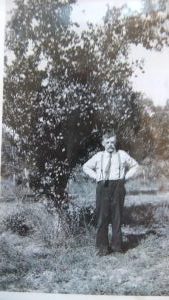
Ernest Sr. was born 30 OCT 1867 (3 days after his parents’ marriage) and baptised on 17 NOV 1867 at Windheim #57, Germany. At the age of 15 he boarded the HH Meier to make the trip alone across the Atlantic. He arrived in New York on May 12, 1883 and made his way to White Lake, South Dakota where he joined his Uncle Chris on his homestead.
The rest of Ernest Sr’s family joined him at Buffalo Center, Iowa where they spent a year before settling on a Homestead in the White Lake District of South Dakota. In 1893 they moved to Woden, Iowa where they resided until 1901. In July of 1899 his father was killed while hauling logs to build a Lutheran Church.
Ernest Sr. journeyed to Edmonton, North-West Territories, Canada in 1900 and filed for 3 homesteads in the names of Louisa (mother), Ernst (himself) and Dietrich Ernest (younger brother).
In 1901 the family, except for sister Sophie Conradi (Humbke), moved to the North-West Territories of Canada and became homesteaders 14 miles East of Wetaskiwin.
On 01 SEP 1905 the Provinces of Alberta and Saskatchewan were created out of the North-West Territories.
MUSIC AND THE FAMILIES
Most of their time was spent eking out an existence as homesteaders, but music was to provide an outlet for social activities, recreation and finding a spouse. In the early 1900’s, the Battle River Cornet Band, consisting of four Humbkes (Dick – Leader, Ernst Sr., Alvina, and Emma), brother in law Carl Callies, Dave and Charlie Widen, Guy Suys and C. R. Wieberg, was formed. The band played at picnics and other social function in the local communities.

In years to come, music and bands were to become a major social and business activity for the Humbke, Callies, George, Fontaine and Harris families in Wetaskiwin, Camrose and surrounding communities.
ERNST SR. AS A HOMESTEADER, FARMER AND STORE KEEPER
Upon arrival in the North West Territories of Canada, Ernst Sr lived with his mother, brother Dick and 3 sisters. Together they farms all three 160 acre homesteads.
The SE 1/4 of Section 12 Township 45 Range 22 West of the fourth was in his name and it is here that Ernst Sr. & Mary had 3 girls:
Erna Louise Humbke b. in Rosenroll (2 miles West of Bittern Lake) NWT 19JUL1903;
Elsie Sophia Marie Alvina Humbke b. on Homestead, Duhamel District, AB 08APR1905; and
Martha Emma Augusta Humbke b. on Homestead, Duhamel District, AB 11JUN1906.
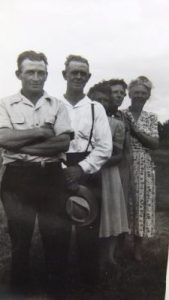
In 1907 Ernst Sr. and Mary sold their 306 acres of land in Iowa, USA to Lyman and Samuel C. Hough of Grundy County, Illinois, USA for $12,800 and bought 320 acres (East 1/2 of Section 35 Township 45 Range 22 West of the 4th) across from the New Berlin one room school. It was here that two boys were born to complete the family.
Ernest Dietrich Humbke Jr. b. at home across from New Berlin School, Duhamel AB b. 03JUN1908; and
Lawrence Henry Humbke b. at home across from New Berlin School, Duhamel, AB 21MAY1911.
The spelling of Ernst Sr.’s name on documents fluctuated between Ernst and Ernest over the years. In the end he was referred to as Ernst in his will, but Ernest on his gravestone.
His first son, Ernest Jr., was often referred to as Ernie by his peers, but to us nephews and nieces he was always known as our friendly uncle who liked to show his love by twisting his knuckle on the top our head.
Ernst Sr. was an adventurous, risk taking, entrepreneur at heart and in 1913 took his family to Edmonton where he opened a store (confectionary or general)r. Business may have been okay, to begin with, but because of a growing animosity toward citizens of German ancestry the business was a failure and the three girls suffered from discrimination at the “North West Edmonton School” at 6902-128 Ave. Edmonton. The girls attended that school from Jan. 1913 to Mar. 19014 before returning to the New Berlin School (soon to be renamed Verdun School) to finish their elementary education.
The school close in June, 1952 and all students were bused to New Norway School in the Camrose School Division. On October 26, 2000 Verdun School was officially declared a Provincial Historic Site and is presently used for reunions and other events.
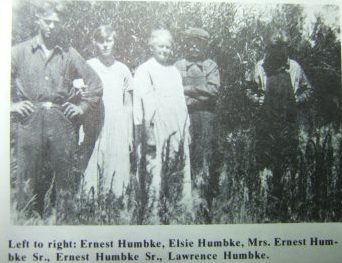
In April 1914 the family returned to live on their farm where Ernst Sr and his boys worked hard to survive the inflation period following WW I and the depression of the 1930’s. My father, Lawrence, told that during the 30’s the tires were taken of the car, oil was put in the cylinders, and the car sat on blocks in a shed – all because there was no money for gas.
On 16FEB1944 Mary passed away from blood poisoning as a result of stepping on a rusty nail. For the last months of her life she was cared for by her middle daughter, Elsie Hladik (Humbke) and family.
Ernst Sr. passed away peacefully on 26SEP1947 in the family home he had built in 1907.
EDUCATION AND THE HUMBKES
The New Berlin School’s name was given by Mr. and Mrs. Pehr Pehrson after the name of their previous home in Berlin, New Hampshire. It was built in 1902 at cost of $700 and opened it door in 1903 and closed in 1952.
Mary Humbke (Mrs Ernst Humbke), age 34, and her sister in law, age 13, (Emma Humbke) were among the first 12 students. They attended classes from 1903 to 1907 and would be followed by 45 Callies, George, Fountaine and Humbke relatives over the next 50 years.

As of 1907 the Ernst Humbke farm was closest to the school and a source of water, boarding for teachers, janitoring, and starting fires during the winter. The three Humbke girls (Erna, Elsie and Martha) attended there and went on to Camrose Normal School where they were trained as teachers. All three worked in one room schools in rural Alberta. Erna taught at Verdun 1923-1925 and Elsie in 1925-26. Ernest and Lawrence completed grade 8 before working full time on the farm and playing in a dance band with cousins.
In 1918 the Department of Education asked the local School Trustees to change the name, as New Berlin was offensive because of WW I. Verdun was chosen as the new name to honor the 976,000 military casualties suffered by the allies and axis in the 303 day Battle of Verdun, France.
Verdun School was the meeting and social center of the community for all activities – educational, religious, political, social (dances, box socials, films, meetings, anniversaries etc.)
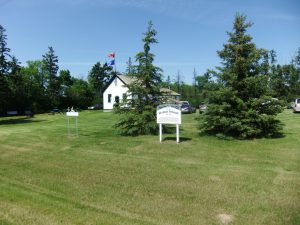
The Verdun School is still used for gatherings. On the first Sunday in June of each year the “Annual Verdun School Strawberry Shortcake, Ice Cream & Tea Reunion” takes place. Other family reunions, picnics and camping activities are a common activity.
Raymond Keinst is the President of the Verdun Historical Committee for 2016-17.
RELIGION AND THE HUMBKES
Religion had always been a very important for the Humbke family.
Ernst Sr. and his father were founding members of the German Lutheran Church NE of Titonka Iowa. Ernst Sr. donated 3 acres of land for the church to be built on and his father was killed while hauling one of the first loads of logs to build the church. (see Post #5)
In the 1920’s the Reverend Henry Immanuel John Kuring, a Lutheran Pastor, came to the Camrose District where he held services and instructed religion classes at the Verdun School. He was a very good friend of the Ernst Humbke Sr. family and Louisa Humbke (Ernst’s mother). Reverend Kuring wrote Louisa’s will in long hand – a will in which she gave 1/3 of her assets to the Lutheran Church. He was to later marry her eldest granddaughter, Erna Humbke (age 21) on Aug 19 1924.
In Canada, Ernst Sr. became a member of the Megiddo Mission, a very small, independent group of enthusiastic, dedicated Christians who depend on the Bible for everything they believed and practice. There is one small church in New York City where they publish the “Megiddo Message” – an inspirational religious bi-monthly focused on Bible study and application… Helping you LIVE the Christ-like life in the 21st century was the goal. It contained no advertising.

Ernst Sr. only saw pictures of the church, but he faithfully read and studied all their publications, and in his will he gave half of his farm (160 acres of land) to the Megiddo Mission. Shortly after Ernst Sr.’s death, Lawrence (,his youngest son and my father) phoned them in New York and offered to buy the land at the value stated in the will ($3,825). I believe they immediately agreed, because they had no interest in land in Alberta and probably thought that such a loyal follower would be stating the true value of his possessions upon contemplating his end, on earth. Their publications continued to arrive through our weekly rural mailbox, weather permitting, but were seldom read by anyone other than myself. I especially valued the American stamps for my collection. They played a minor part in my religious education, as I was at the same time taking very thorough, demanding correspondence lessons in the Catholic faith.
ERNST’S CHARACTER
Ernst Sr. was a stoic who accepted his lot in life without complaint. He was a man of strong character, a religious man who saw and fulfilled his duty of making sure his family stayed out of debt and was financially secure. He was more of a deep thinker who spent his time reading and contemplating life.
He was not what would today be considered an ideal grandpa. Ernst Sr. did provide stability and support for his own family, but did not show great physical affection. His grandchildren saw him as a stern, strict grandpa who seldom talked and paid little attention to them.
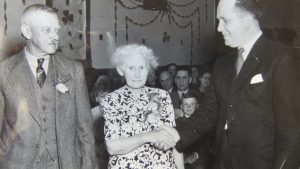
Ernst Sr. was generous to others in need and often gave help and assistance. His good relationship with local Native Indians started back in 1901 when he spent time with a tribe of 300 Indians in the Fort Saskatchewan area while searching for a homestead. From them he learned of available land South on the Battle River.
In later years local Indians would occasionally come to his home for food if hungry. Granddaughters remember seeing Indians sitting on the floor, against the wall of his kitchen, eating a plate of food he had given them. This relationship was continued by his sons who would hire Indian families from the Hobbema Reservation to come and pick roots.
As his grandson, I also had an interest in native people and lived on Metis Colonies and Indian Reservation where I was a teacher, coach and Boy Scout/Cub Leader. From 1993 – 1999 I lived common-in-law with a Metis wife, Dorothy Quintal, and helped raise three of her children. Dorothy taught Cree and I started a Metis Dance Group.
Chris Humbke (see blog #2), the uncle of Ernst Sr., was the first Humbke to arrive in North America in April of 1878. Chris was followed by Ernst Sr. in May, 1883. In Aug, 1883, Mary (future wife of Joe George) arrived with her & Ernst Sr’s mother and father, plus two sisters and a brother. Alvina (future wife of Dave Fontaine) & Emma (future wife of Ernest Harris) were two more sisters, both born in White Lake, South Dakota.
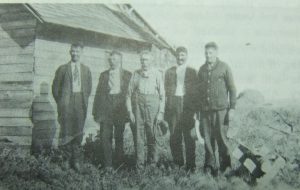
In the photo above, Chris Humbke was visiting his sister in law, nephews and nieces in the Wetaskiwin area before returning to his home in South Dakota. Joe was wearing a tie so the photo was probably taken on a Sunday after church services. Ernest Sr. appears to be the shortest and Ernest Harris appears to be the tallest man. One of the four wives was probably taking the photo and the other three would be busy preparing a Sunday dinner.
WILL OF ERNST’S DIETRICH FRIEDRICH HUMBKE SR.
Last years of Ernst Sr., at the age of 71 years, had the following will written on 14 JAN 1939. In it he leaves
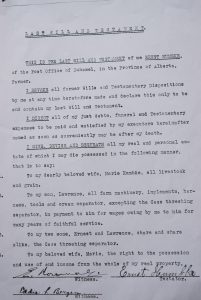
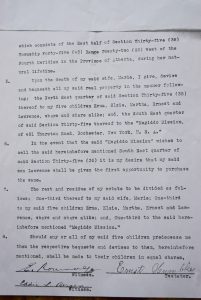
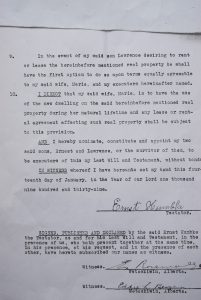
After his wife’s death in 1945, Ernst Sr. would spend his winters with Ernest Jr. and his family. His son, a carpenter, built a cozy cabin for him on his farm which was just 1 mile South of the farm of Ernst Sr.
Ernest Jr., his wife (Adeline “Toots” Denton) and their 3 daughters (Gerry, Donna and Barbara) took their meals with Ernst Sr. One of the grandaughters’ main memories of Grandpa is that there were never any bones on his plate after eating fish. White fish from Pigeon Lake was a favourite delicacy, but mothers and children had a great fear of him choking on the bones. It was amazing to them that Grandpa could eat the bones with no problem whatsoever.
Most of Ernst Sr.’s time was spent in his cabin reading, thinking or talking with his son in the evenings.
Denton Ernest Humbke (son of Ernest Jr. and Toots) was born 24SEP1947, just two days before the death of his Grandpa, Ernst Humbke Sr.
In the summer Ernst Sr. would return to his own house where Marvaline (Lawrence’s wife) would prepare his meals and look after him. Their daughter, Rose Marie, would take him his meals which he usually ate alone and Lawrence would visit him in the evenings.
I remember him for the strong smell of his pipe smoke – which to me had a very pleasant aroma. He slept on a cot just inside the front door and didn’t seem to mind if I rode my tricycle in his house.
Once when he had gone to town with my parents, I played scientist and took his battery radio apart. The fear of a beating resulted in me hiding in a hay manger where I fell asleep. After much searching and hollering I was eventually found and yes I did get a spanking from my dad.
My deepest memory of Grandpa Humbke was that of a long black hearse coming up our laneway to pick up his body for his last ride
Ernest Jr. and Lawrence were the Executors of his Estate.

Ernest Sr. is buried, next to Mary his wife, in the Wetaskiwin City Cemetery at Wetaskiwin, Alberta.
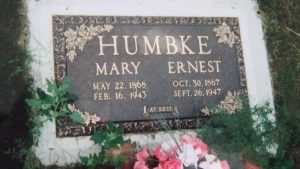
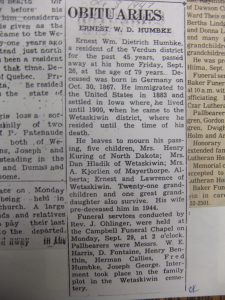 As time goes on I hope to collect more photos and document which I will be adding to these blogs. Any corrections, information, photos or documents would be very much appreciated. You can easily contact me in Edmonton AB at 780-782-6277 or rogerhumbke@hotmail.com
As time goes on I hope to collect more photos and document which I will be adding to these blogs. Any corrections, information, photos or documents would be very much appreciated. You can easily contact me in Edmonton AB at 780-782-6277 or rogerhumbke@hotmail.com
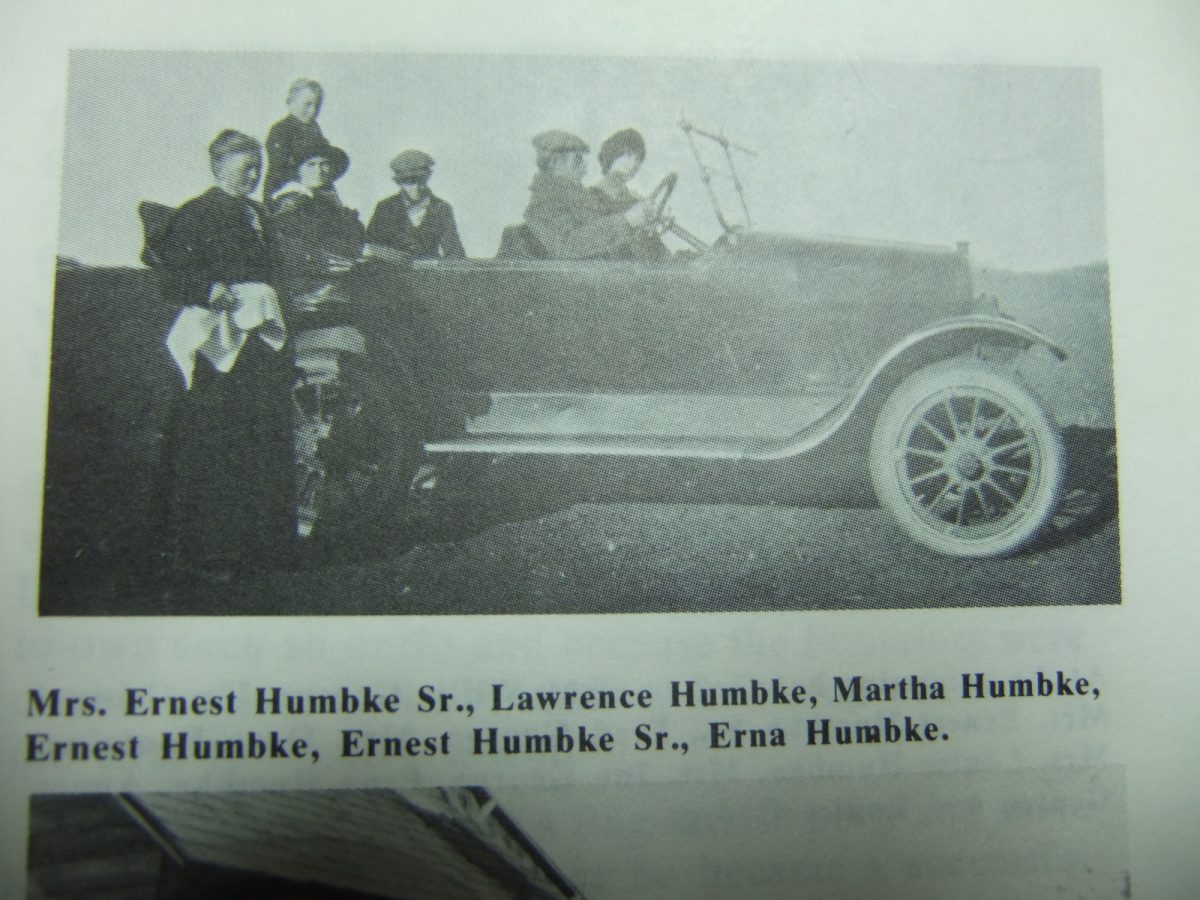
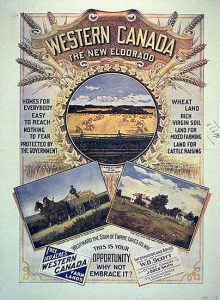
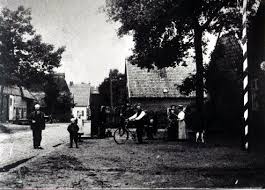
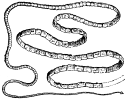
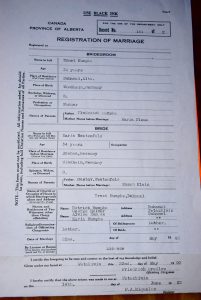
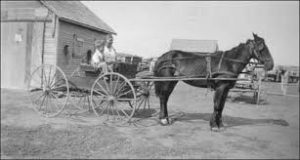
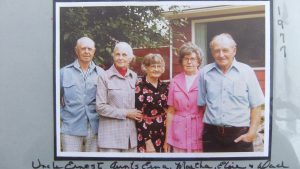

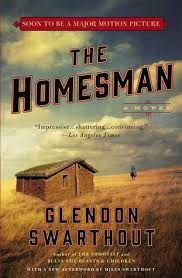 ts just how difficult it was for women to keep their sanity. In all my research I have not found any indication of mental illness and feel it must be because our families were large and composed of a number of adults and children who supported each other in both work and play.
ts just how difficult it was for women to keep their sanity. In all my research I have not found any indication of mental illness and feel it must be because our families were large and composed of a number of adults and children who supported each other in both work and play.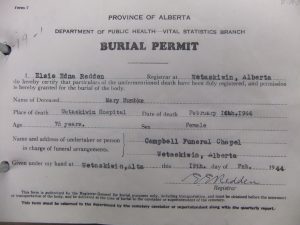

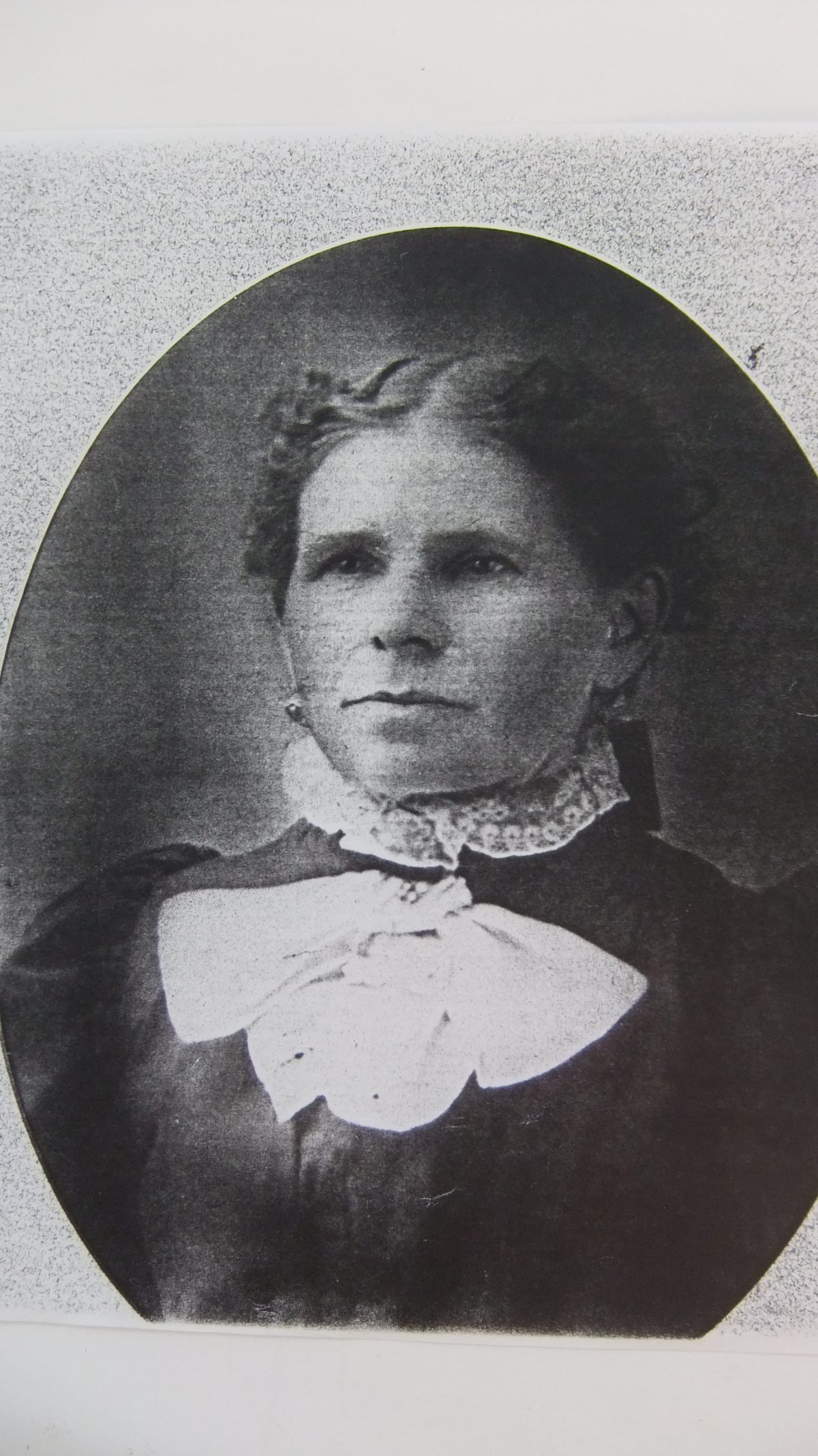

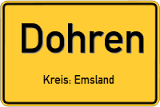 any a great trip would include the German Emigration Center & German Maritime Museum in Bremerhaven; plus a trip up the river by boat from there to Windheim or the closest city the boat docks.
any a great trip would include the German Emigration Center & German Maritime Museum in Bremerhaven; plus a trip up the river by boat from there to Windheim or the closest city the boat docks.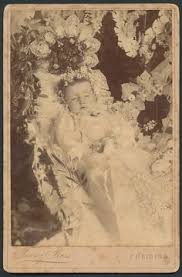 next two children.
next two children.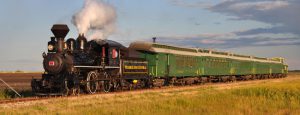

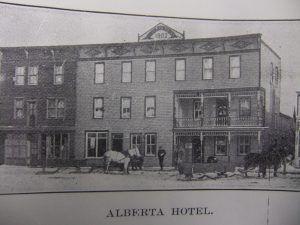
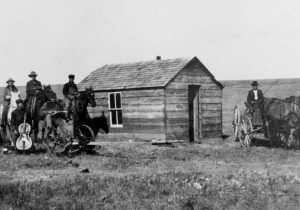
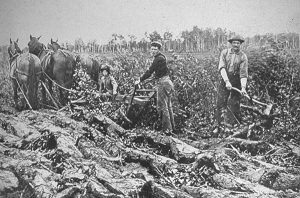
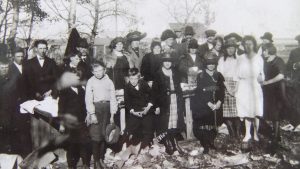
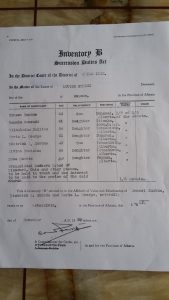
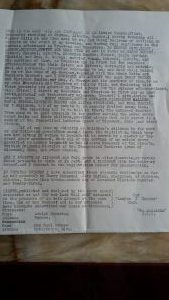
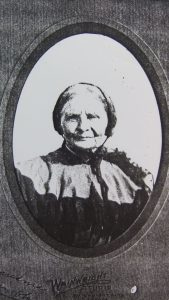

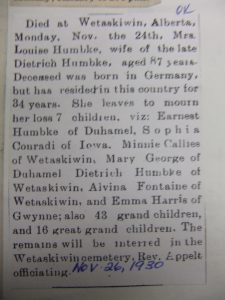
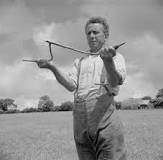
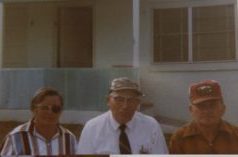
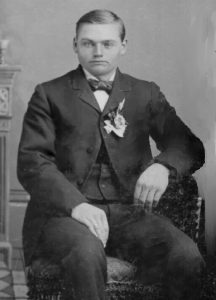
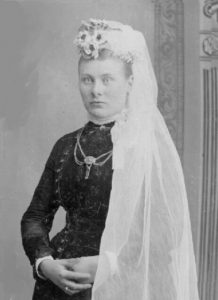

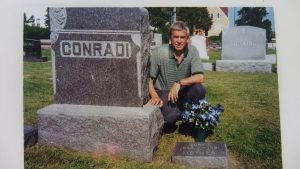
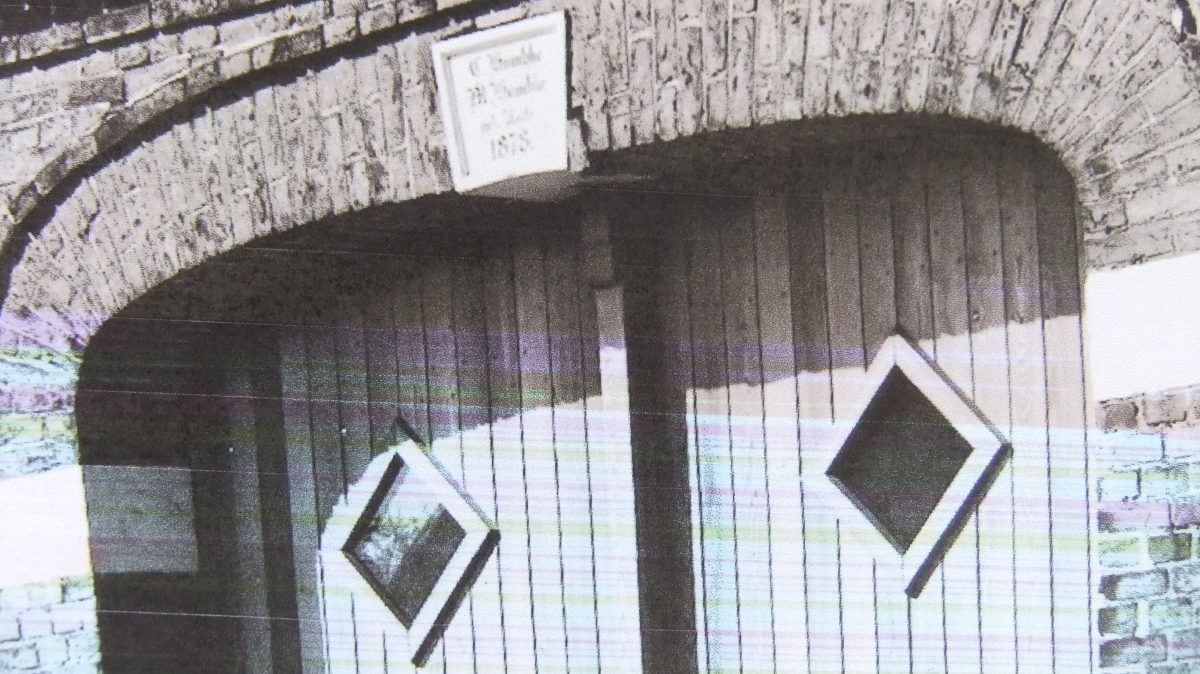

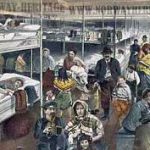
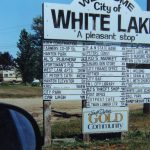 All members of the family were born in Windeheim, Westphalia, Germany with the exception of Alvina and Maria who were born in White Lake, South Dakota.
All members of the family were born in Windeheim, Westphalia, Germany with the exception of Alvina and Maria who were born in White Lake, South Dakota.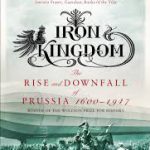 For those who have a greater interest I recommend reading the “Iron Kingdom: The Rise and Downfall of Prussia, 1600-1947″ by Christopher Clark (2009).
For those who have a greater interest I recommend reading the “Iron Kingdom: The Rise and Downfall of Prussia, 1600-1947″ by Christopher Clark (2009).